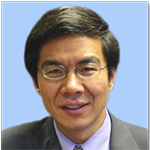Evidence based medicine is widely accepted across the world and is used to make sure that decisions about patient care are informed by current best evidence. [1] Clinical practice guidelines, “informed by a systematic review of evidence and assessment of benefits and harms of alternative care options,” are important in guiding care and clinical outcomes, particularly for large developing countries like China. [2] However, they have to be of high quality.
China published 664 clinical practice guidelines by the end of 2016. [3] Compared with those from Western countries, however, Chinese guidelines are generally of lower quality, according to the criteria of the Appraisal of Guidelines for Research and Evaluation (AGREE). [4-7] On one hand, the number of guidelines available shows that evidence based medicine has been embraced widely in China and the Chinese medical community is active in guideline development. On the other hand, low quality guidelines could do more harm than good.
China needs fewer, but more high quality clinical guidelines. It is challenging to develop unbiased, independent, transparent, and rigorous guidelines. Those challenges do not only exist in technical aspects, but can also be the result of a lack of awareness of conflicts of interest and insufficient and ineffective management in the guideline development process.
One big, ongoing challenge is the effective management of conflicts of interest and sources of funding. Among the six domains of AGREE, in the “editorial independence” domain, only 26.4% of Chinese clinical practice guidelines published in 2017 disclosed a COI and 18.9% stated their sources of funding. [8] In contrast, Western clinical practice guidelines scored much higher in this respect. For example, 60% of clinical guidelines reported disclosure statements either in the guideline itself or in the National Guideline Clearinghouse summary. [9] The majority of WHO guidelines reported funding sources, relationships of interest, and conflicts of interest of external contributors in their guideline documents. [10] It is worth noting, however, that some progress has been made in China by guidelines developers to improve the transparency of authors in recent years. For example, the Chinese Pharmacological Society provided detailed competing interest information in its guidelines for the monitoring of vancomycin. [11]
Conflict of interest statements include both financial and nonfinancial declarations. Declaration of non-financial competing interests has proven difficult in guideline development. [12] To tackle this problem, in 2016 the Chinese Medical Association published their Guidelines for Developing Clinical Guidelines and proposed conflict of interest disclosure policies for Chinese guideline developers. [13] Although they are not mandatory, these guides showed the determination that exists in China to make a change in order to effectively manage competing interests. In addition, the RIGHT Statement was issued as a reporting tool of clinical guidelines in 2017. [14] We urge the editors of Chinese medical journals to make it a requirement that all authors submit their conflict of interest statements according to the RIGHT Statement at the time of submitting their guideline for publication.
Although the majority of guidelines in China are developed by committees of medical professionals, some are financially supported by pharmaceutical companies. [8] A considerable degree of interactions between authors and the pharmaceutical industry has been documented in western countries. [15] It is important that all such interactions are explicitly disclosed in order to ensure transparency. Furthermore, simple disclosure may not be effective in eliminating potential biases. It is important, therefore, to reduce or even totally avoid drug company sponsorship. In order to help reach this ultimate goal, the Chinese government or non-government organisations could consider building a public foundation to finance the development of guidelines. Indeed, this has started to happen; the China Health Promotion Foundation, a non-governmental organisation, has initiated a programme to provide funding for developing a Chinese guideline for antithrombotic therapy and prevention of thrombosis. [16]
Another important matter is the engagement of patients in guideline development. Initiating patient involvement is challenging as it is always hard to make a change in any field. We have made great efforts to generate, collect, review, and rate evidence, and develop guidelines. These are all for the benefit of patients. Therefore, patients should have a say in decisions about their treatment. Efforts have been made to involve patients and carers in guideline development and encourage them to share their experiences, values, preferences, and views. [17] Doctor-patient relations are currently tense in China and traditional views about this relationship may make it difficult for patients and guideline developers work together effectively. Additionally, few patients are familiar with guideline development and it takes time for them to understand their role in their care and build up the skills and confidence to work with doctors. Some groundbreaking work has been done by Chinese guideline developers. For example, efforts had been made to involve patients in developing the guidelines for exercise therapy for knee osteoarthritis developed by the China Association of Gerontology and Geriatrics.
We need more thinking, discussion, and debates about ways of involving patients. We need to experiment with various methods and accumulate experiences. We need research to evaluate these methods and provide evidence for further improvement. We need to share successful experiences and continue to improve.
To transfer challenges into opportunities, evidence based medicine advocates and guideline developers should work together to manage more effectively conflicts of interest and funding sources, and engage patients. Generating high quality guidelines is important to promote patients’ health and the population’s wellbeing, which is important for China to achieve its objectives of Healthy China 2030.
 Siyan Zhan, professor and director of Department of Epidemiology and Biostatistics, School of Public Health, Peking University, and director of Center for Clinical Epidemiology, Peking University Third Hospital, and Vice Director of Peking University Centre for Evidence-based Medicine.
Siyan Zhan, professor and director of Department of Epidemiology and Biostatistics, School of Public Health, Peking University, and director of Center for Clinical Epidemiology, Peking University Third Hospital, and Vice Director of Peking University Centre for Evidence-based Medicine.
 Daoxin Yin, China editor of the BMJ.
Daoxin Yin, China editor of the BMJ.
 Jinling Tang, professor of epidemiology, Chinese University of Hong Kong, and director of Peking University Centre for Evidence-based Medicine, and co-translator of 2006 BMJ Clinical Evidence.
Jinling Tang, professor of epidemiology, Chinese University of Hong Kong, and director of Peking University Centre for Evidence-based Medicine, and co-translator of 2006 BMJ Clinical Evidence.
Competing interests: None declared.
References:
- Benjamin Djulbegovic, Gordon H Guyatt. Progress in evidence based medicine: a quarter century on. Lancet, 2017;390:415-23.
- Greenfield S, Steinberg EP, Auerbach A, Avorn J, Galvin R, Gibbons R. Clinical Practice guidelines we can trust. Institute of Medicine, 2011.
- Chen YL, Wang Chen, Shang HC, Yang KH, Norris SL. Clinical practice guidelines in China. BMJ 2018;360:j5158.
- Hu J, Chen R, Wu S, et al. The quality of clinical practice guidelines in China: a systematic assessment. Journal of Evaluation in Clinical Practice 2013;19(5):961-7.
- Chen YL, Yao L, Xiao XJ, at al. Quality assessment of clinical guidelines in China: 1993-2010. Chin Med J (Engl) 2012;125:3660-4.
- Chen YL, Hu S, Wu L, Fang X, Xu W, Shen G. Clinical practice guidelines for hypertension in China: a systematic review of the methodological quality. BMJ Open 2015;5:e008099.
- Deng W, Li L, Wang Z, et al. Using AGREE II to evaluate the quality of traditional medicine clinical practice guidelines in China. J Evid Based Med 2016;9:152-62.
- Wang Qiang, Huang Chao, LI Jun, et al. A survey of reporting status of conflict of interest and economic evidence in Chinese clinical practice guidelines published in 2017. Chinese Journal of Evidence-Based Medicine, 2018;18(4):379-387.
- Norris SL, Holmer HK, Ogden LA, Selph SS, Fu R. Conflict of interest disclosures for clinical practice guidelines in the national guideline clearinghouse. PLoS One. 2012;7(11):e47343.
- Wang X, Chen Y, Yao L, et al. Reporting of declarations and conflicts of interest in WHO guidelines can be further improved. J Clin Epidemiol. 2018 Jun;98:1-8.
- Ye ZK, Chen YL, Chen K, et al. Therapeutic drug monitoring of vancomycin: a guideline of the Division of Therapeutic Drug Monitoring, Chinese Pharmacological Society. J Antimicrob Chemother. 2016 Nov;71(11):3020-3025.
- Akl EA, El-Hachem P, Abou-Haidar H, Neumann I, Schünemann HJ, Guyatt GH. Considering intellectual, in addition to financial, conflicts of interest proved important in a clinical practice guideline: a descriptive study. J Clin Epidemiol. 2014;67(11):1222–8.
- Jiang ZM, Zhan SY, Jia XW, et al. Guide for developing or revising Clinical Practice Guidelines. Natl Med J China, 2016;96(4):250-3.
- Chen Y, Yang K, Marušic A, et al. A reporting tool for practice guidelines in health care: the RIGHT Statement. Ann Intern Med, 2017, 166(2): 128-132.
- Niteesh K. Relationships between authors of clinical practice guidelines and the pharmaceutical industry. JAMA 2002;287:612-7.
- Expert Committee of Chinese Guideline of Antithrombotic Therapy and Prevention of Thrombosis. Chinese guideline of antithrombotic therapy and prevention of thrombosis. Natl Med J China, 2018; 98(36):2861-88.
- Zhang Y, Coello PA, Brożek J, et al. Using patient values and preferences to inform the importance of health outcomes in practice guideline development following the GRADE approach. Health Qual Life Outcomes. 2017 May 2;15(1):52.
